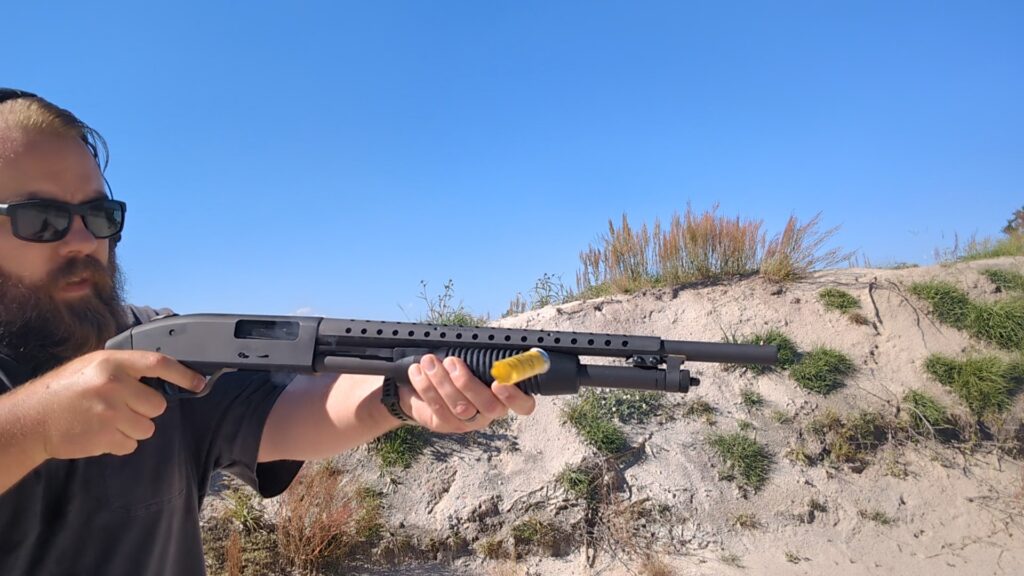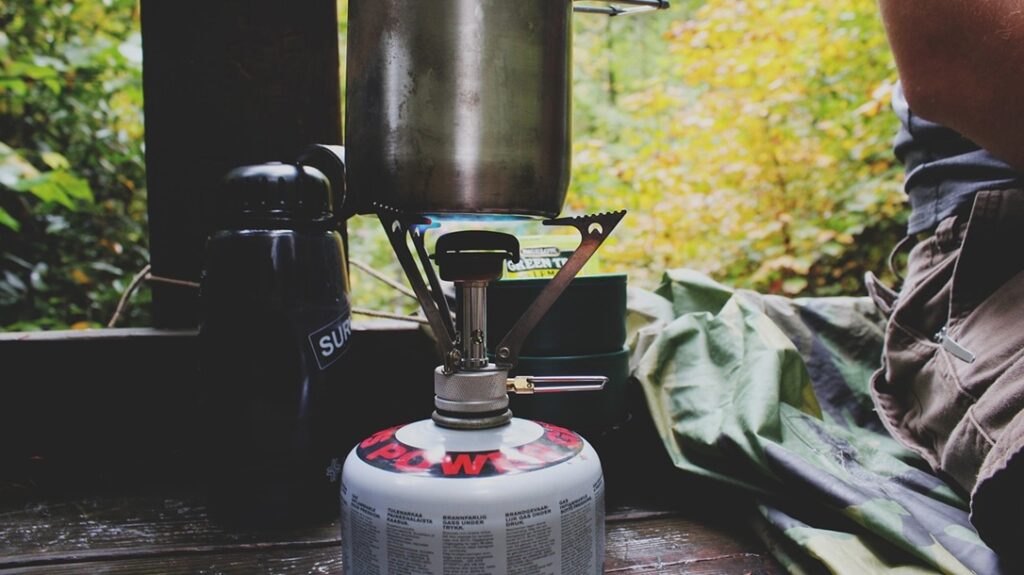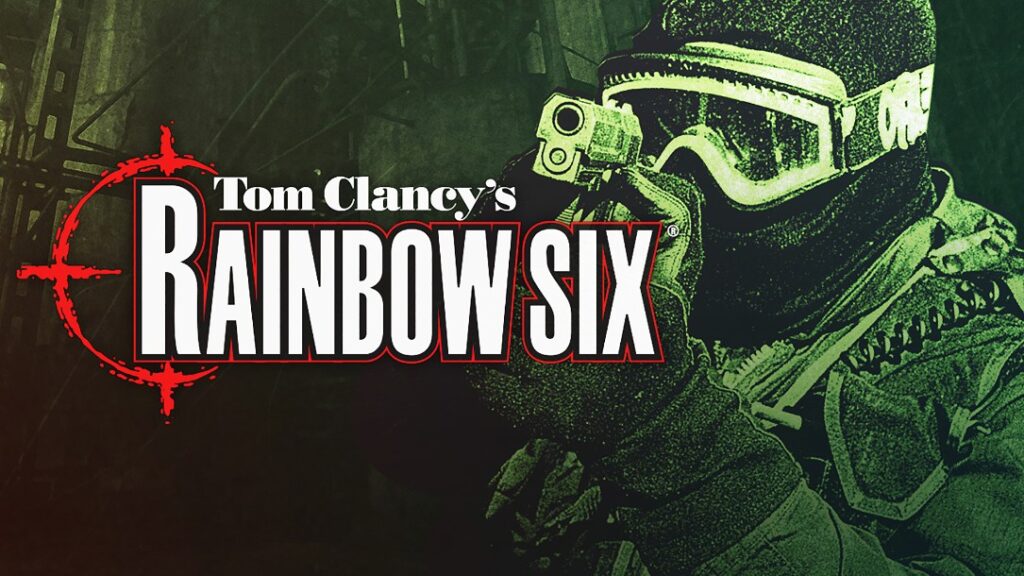I am not recommending that you carry such a small caliber revolver for personal defense. I will posit there is sometimes a place for it. A good friend found a place for a small handgun. Hemingway’s comments on meeting a great woman or two in your life made quite an impression on me. One that definitely qualified is a woman I have not seen in thirty years. Amanda was and still may be a psychiatric nurse. During the course of some incidents in which our paths crossed we became quite close. She told me that she loved the people she worked with or she could not do the work but she wasn’t going to let them kill her. She carried a Colt .25 ACP in a sewn in bra holster. About the same time a nurse walking out of the local hospital was assaulted and dragged into a car. She drew a .380 ACP pistol and shoved it into the assailants belly. It fired once and jammed. The assailant seriously injured her and fled although we found him later. He was not seriously injured. A senior I used to walk from a church to her car at night showed me a .22 Magnum derringer she carried, a gift from her late husband, a peace officer. She said ‘I don’t need you!’ These small guns give the user some peace of mind and while it may be misplaced I suppose it is better than no gun at all. Although depending on the range I would perhaps prefer a good sharp stout knife.
A revolver that seems to be owned by practically every handgun crank although they don’t always admit carrying it is the North American Arms single action revolver. It is well made of good material. Some of the smallest examples are difficult to use well. Most are solid frame revolvers with a base pin that is removed to unloose the cylinder from the frame. There are break top and swing out cylinder versions and interchangeable cylinder revolvers as well. My example is a much improved shooter. The Sheriff features a three inch barrel and boot grip. The Sheriff features the standard base pin and cylinder design. The base pin must be pulled forward to allow removal of the cylinder. The cartridges are loaded one at a time then the cylinder is locked back in place. To unload the revolver the same procedure is followed. To safely carry the revolver the hammer spur must be lowered into a safety notch between cylinders. If you are not absolutely certain you are able to be certain you have the hammer properly placed in the safety notch then load only four cartridges in the five shot cylinder. To fire the revolver the hammer is cocked and the spur trigger pressed. The hammer must be cocked for every shot. No trigger guard is needed as the hammer is down and at rest and a press on the trigger cannot cock the hammer. As you may imagine drawing the NAA revolver cocking the hammer and firing must be practiced often to provide any degree of protection.
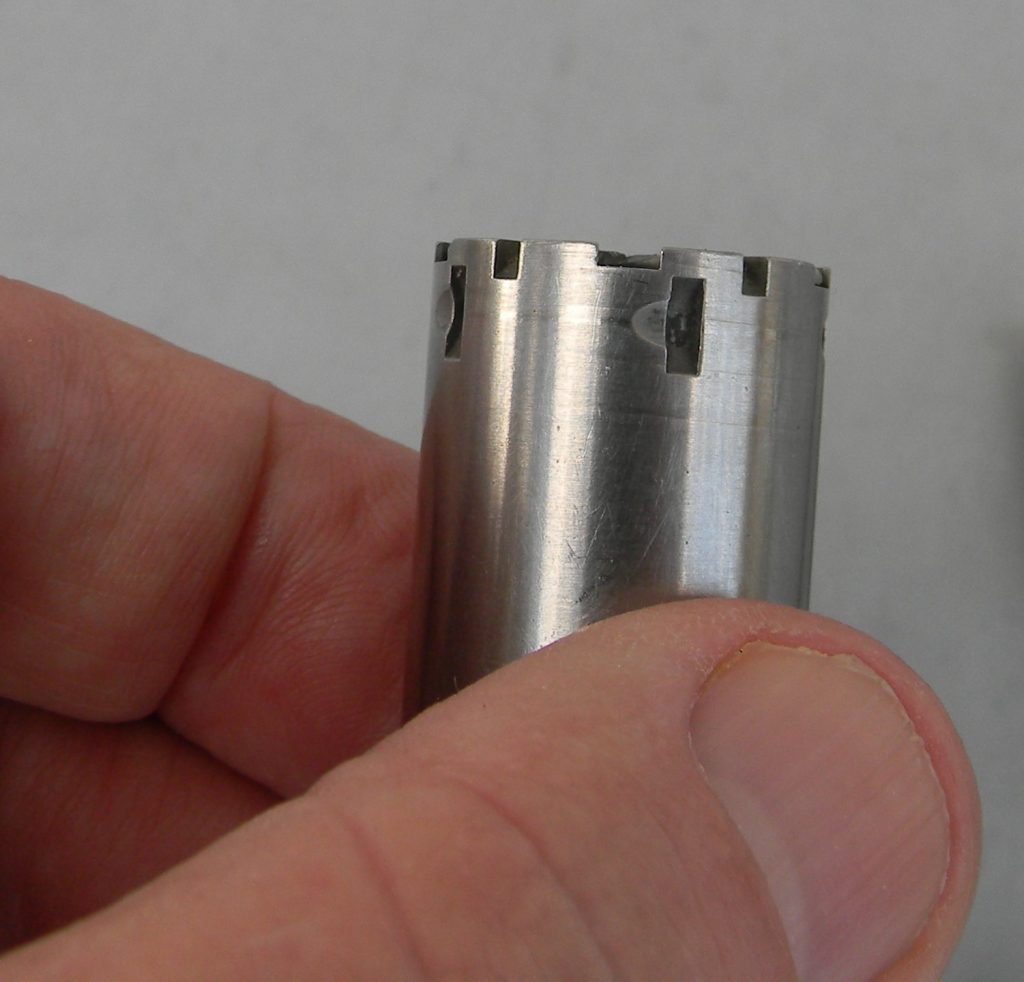
Advertisement — Continue Reading Below
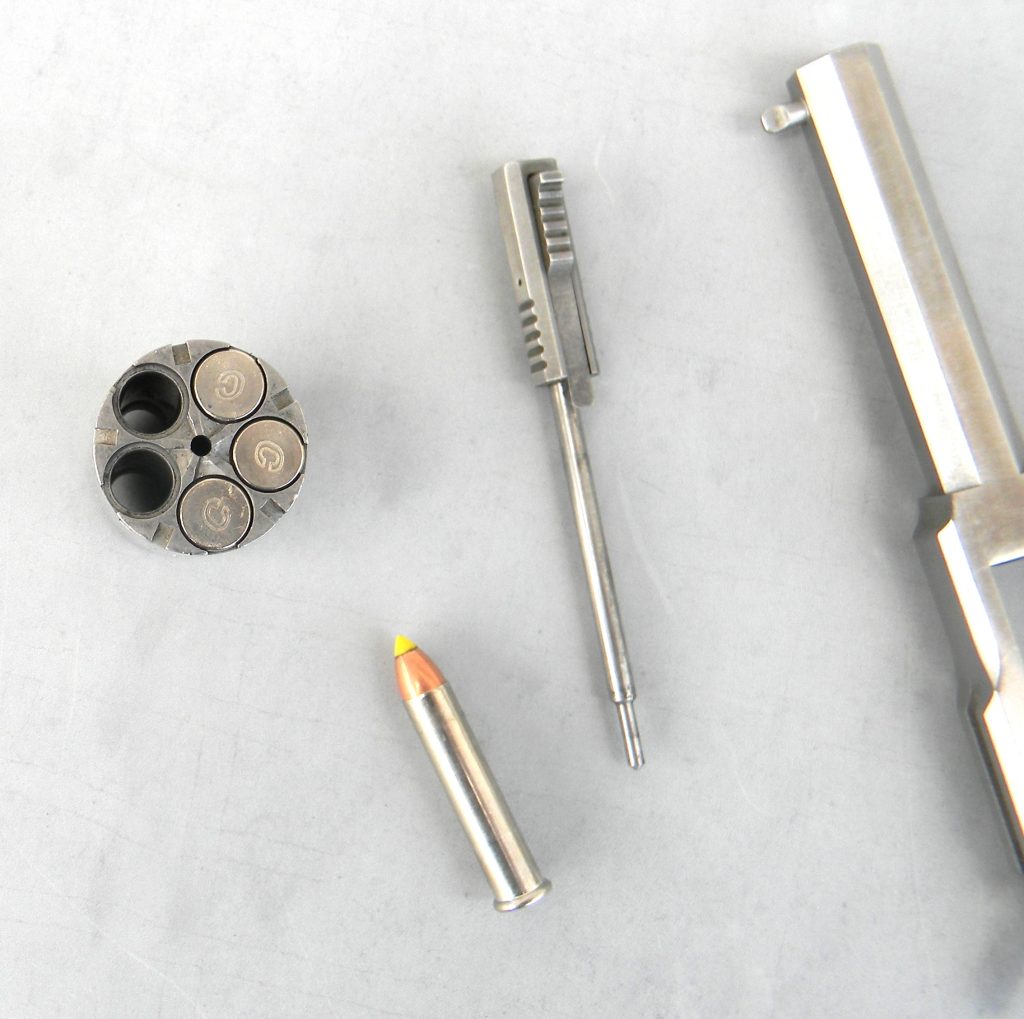

I have fired a number of the NAA revolvers and found the types universally reliable and well made. The problem is the power deficit and the difficulty in using them well. They are popular as I suppose a kind of handgunner’s fashion accessory. Some feel that flash and blast will deter a bad guy. I think a bad guy with a gun will be encouraged to fire more quickly and more accurately when they realize they have been shot at or to move in and crown you good if unarmed. It is best to hit the adversary hard in the right place. That said I come from a profession that relies on backup guns. Weight and expense have shooters looking for a solution and one that just might save a life. The Sheriff is a neat trick. These little guns are well made like good clockwork. The sights are very simple- a front post and a square notch rear. I have labeled the originals with their 1.9 inch or shorter barrel a contact weapon. They would be used much as if you were giving your attacker a nasal inhaler. The Sheriff is a far different story. I am actually able to get hits far past conversational distance. The trick is to take a firm grip. As you bring the revolver up toward the target from concealed carry cock the hammer as you bring the front sight toward the target. When the front sight breaks the plane between the eye and the target press the trigger. At three to five yards you will get a center hit with practice. At contact range as befits the .22 Magnum’s backup role it may be easier. At five yards slowing down and taking my time to get a hit the revolver groups five shots into about two inches easy enough. I really stretched the envelope and tried a few shots at ten yards. I used an unrealistic braced barricade position. I aimed as best I could and pressed the trigger. Being very careful I managed a four inch group at ten yards. The group was about three inches high, the result of muzzle flip. This is impressive for the weapon involved. In favor of the NAA Sheriff is smoothness and reliability. Power not so much.
Advertisement — Continue Reading Below
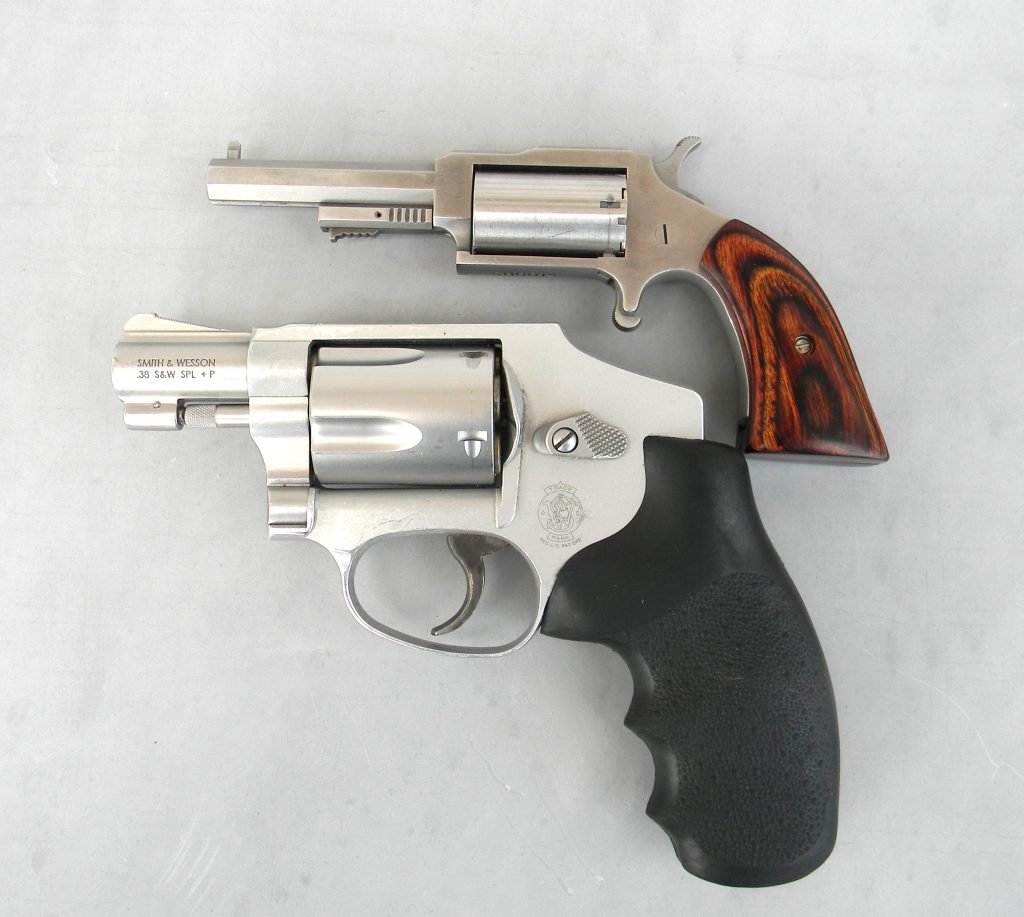
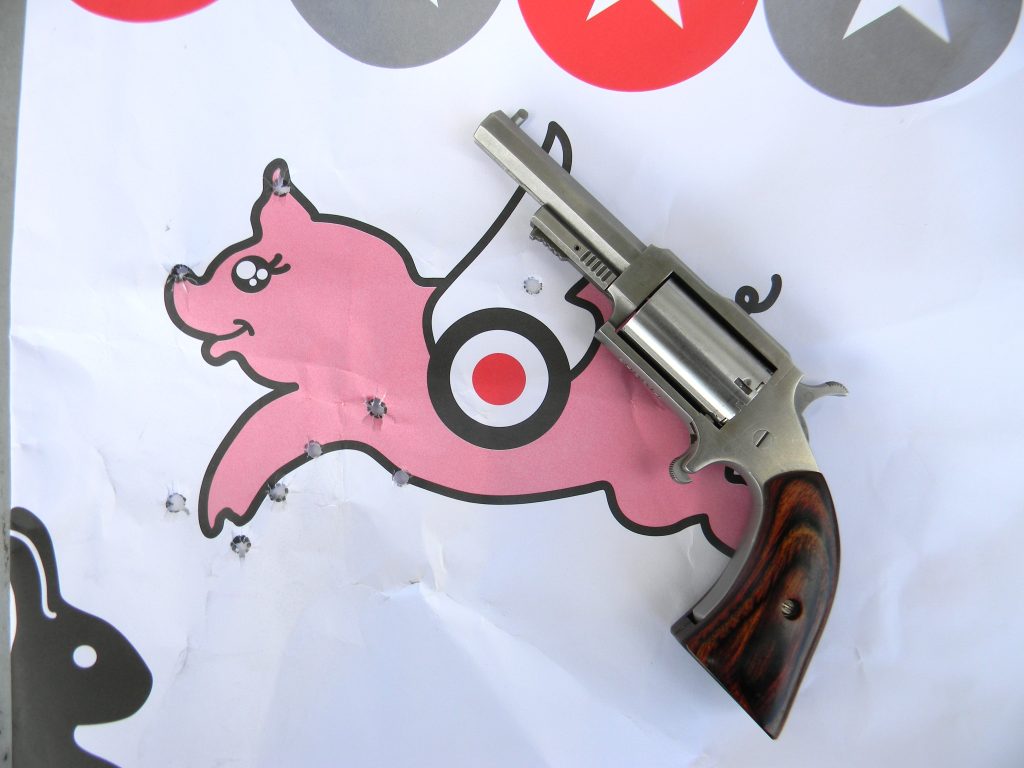
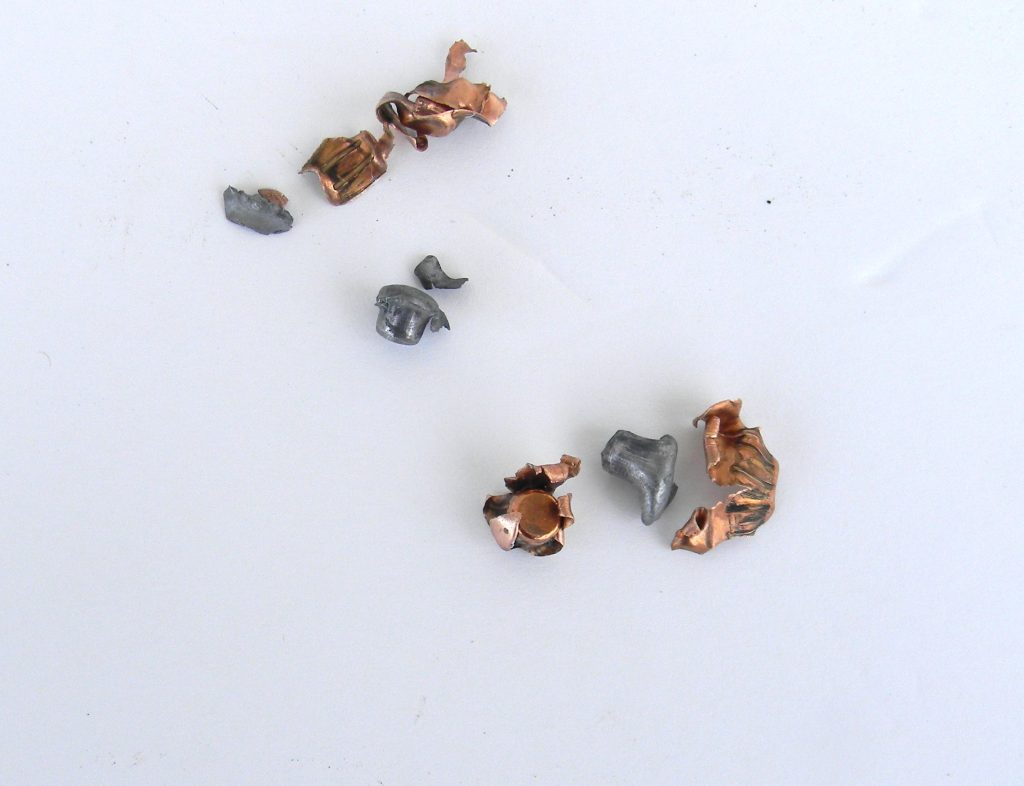
Advertisement — Continue Reading Below
The revolver is reliable with a wide range of ammunition. Most of us rely on the CCI Maxi Mag for its reputation for reliability. Do not use 30 grain loads as penetration is poor. Fairly recently Hornady developed the FTX .22 Magnum Critical Defense and Federal gave us the Punch. These are purpose designed defense loads. I might still opt for a non expanding .22 Magnum load and rely on penetration alone but just the same these loads give the best balance of penetration and expansion possible in this caliber. Each shows good expansion to about .32 to .35 caliber. Velocity is just at 1100 fps. After a 100 round evaluation I find the NAA Sheriff reliable and perhaps it fills a niche as a backup or third gun. It is a fun gun and challenging to use well. If it fits your needs practice and be certain to keep in mind the limitations of range, power, and accuracy.
- Caliber .22 Magnum
- Five shot cylinder
- Barrel Length 3 inches
- Weight 8.3 oz.


